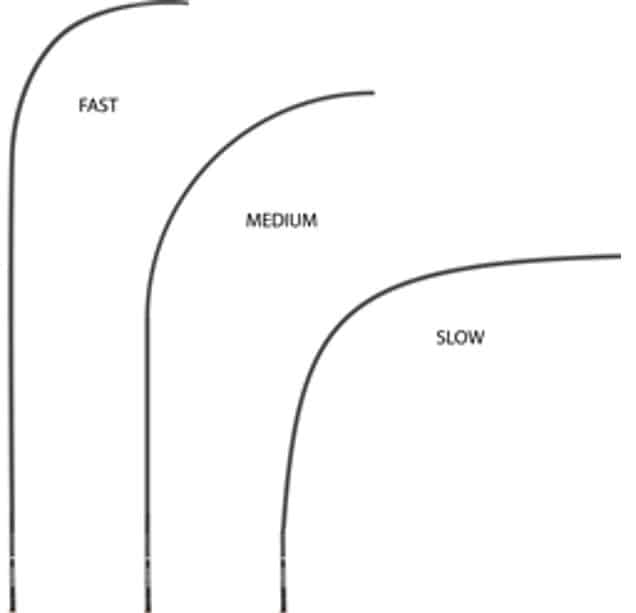Purchasing a fishing rod seems to entail an endless stream of options regarding length, action, power and other things. Options require decisions, and decisions presume a level of knowledge and experience on the buyer’s part.
For a first-timer, it can be intimidating, or at least confusing. Fortunately, at this stage when you want something that fulfills a variety of needs, it’s really pretty simple to cut through the jumble and end up with a rod you’ll enjoy fishing.
First, decide what type of fish you’ll target most often—panfish such as bluegills and crappies, or bigger fish like bass, catfish and walleyes—then make a choice with a priority on that preference.
Here’s where a basic understanding of the terms “power” and “action” comes in. Think of power as the rod’s strength. It’s described in terms of weight—ultra-light, light, medium-light, medium, medium-heavy, heavy or extra-heavy—and relates the amount of weight the rod can lift or pressure it can apply.
Action describes how quickly the rod flexes and where along its length it begins to bend. It’s described in terms of speed—fast, medium or slow. Under pressure a fast-action rod starts to bend about ¼ of its length from the rodtip. A medium-action bends about half-way down, while a slow rod typically starts to bend somewhere between half and ¾ from the tip.
For purposes of this discussion, power is the more critical factor. If you plan to target catfish, pike or other predators of similar size and strength, think medium-heavy to heavy power. Conversely, if you’ll target panfish or stream trout only, light to medium-light would be in order.
But for an all-around rod, one that I’d be comfortable fishing walleyes, bass, channel cats and panfish, I’d choose a medium power spinning rod, possibly medium-light if it behaves more “medium” than “light.” I wouldn’t expect it to perform optimally in every situation. In other words, I may not feel the most subtle strike, nor get the full experience of a big bluegill’s awesome fighting ability. Nor would I have complete control over a truly big bass or catfish. But one thing’s certain—I’d land most of the fish I hooked.
To maximize efficiency, keep line sizes and lure weights within the parameters printed on the blank. A lure that’s too light, for example, can’t flex (load) the rod on the backstroke and won’t cast well. Recommended line weights for a medium-power rod typically range from 6 to 14 pounds; lure weights from 1/8 to 5/8 ounce—acceptable for panfishing on the low end and bass or walleyes on the high end.
As for length, a 6 or 6½ footer will perform well in a variety of situations, and I wouldn’t rule out a 7 footer if there were other things about it—hand weight, balance, feel, appearance—I really liked. I also prefer a one-piece rod over a two-piece, but if it’s easier for you to transport or store a two-piece, don’t hesitate to go that route. After all, you want to make it “easy” to go fishing.
Once you’ve fought and landed numbers of fish of different species on your first rod, you’ll begin to figure out how a lighter power might be more exciting to fish, or heavier power might perform better, under certain circumstances. When that happens, you’ll be well equipped to make those decisions without being overwhelmed by options.




Share this: